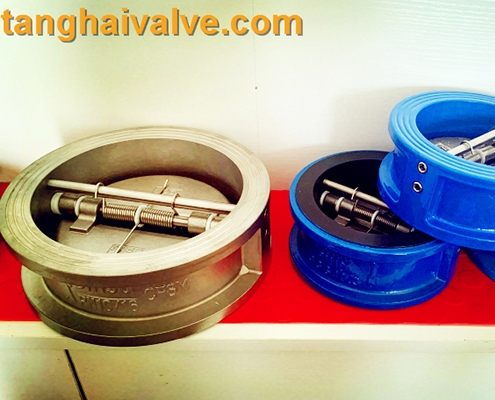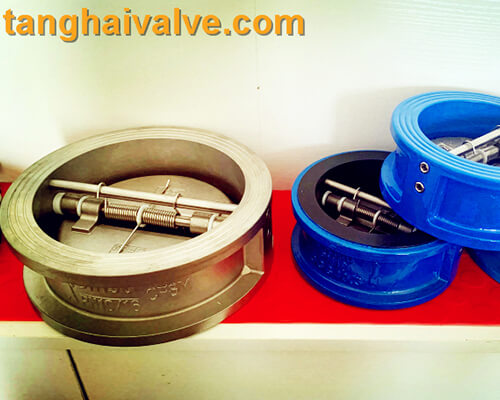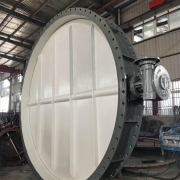Installation method and precautions of check valve
Check valve installation method:
1. Swing check valve: The disc of the swing check valve is disc-shaped and rotates around the shaft of the valve seat

double-wing-check-valve-3
passage. Because the inner passage of the valve is streamlined, the flow resistance is smaller than that of the lift check valve. It is suitable for large-caliber occasions where the flow rate is low and the flow does not change frequently, but it is not suitable for pulsating flow, and its sealing performance is not as good as the lifting type. Swing check valves are divided into three types: single, double and multiple valves. These three types are mainly classified according to the valve diameter. The purpose is to prevent the medium from stopping or flowing backwards and weaken the hydraulic shock.
2. Lifting check valve: a check valve whose disc slides along the vertical centerline of the valve body. The lifting check valve can only be installed on a horizontal pipeline. The disc can be used on a high-pressure small-diameter check valve. . The valve body shape of the lift check valve is the same as the stop valve (can be used in common with the stop valve), so its fluid resistance coefficient is relatively large. Its structure is similar to the stop valve, and the valve body and disc are the same as the stop valve. The upper part of the valve disc and the lower part of the valve cover are processed with guide sleeves. The disc guide can be lifted and lowered freely in the valve guide sleeve. When the medium flows downstream, the disc opens by the thrust of the medium. When the medium stops flowing, the disc depends on its own It falls on the valve seat to prevent the medium from flowing backward. The direction of the medium inlet and outlet channel of the straight-through lift check valve is perpendicular to the direction of the valve seat channel; the vertical lift check valve has the same direction of the medium inlet and outlet channels as the valve seat channel, and its flow resistance is smaller than that of the straight-through type.
3. Disc check valve: a check valve with the disc rotating around the pin shaft in the valve seat. The disc check valve has a simple structure and can only be installed on a horizontal pipeline, with poor sealing performance.
4. In-line check valve: a valve with the valve flap sliding along the centerline of the valve body. In-line check valve is a new type of valve. It is small in size, light in weight, and good in processing technology. It is one of the development directions of check valves. However, the fluid resistance coefficient is slightly larger than that of the swing check valve.
5. Compression check valve: This valve is used as a boiler feed water and steam shut-off valve. It has a comprehensive function of lift check valve and stop valve or angle valve.
In addition, there are some check valves that are not suitable for pump outlet installation, such as bottom valve, spring type, Y type, etc.
Precautions
1. Do not allow the check valve to bear weight in the piping system. Large check valves should be independently supported so that they are not affected by the pressure generated by the piping system.
2. When installing, pay attention to the direction of medium flow should be consistent with the direction of the arrow marked on the valve body.
3. Lifting vertical flap check valve should be installed on the vertical pipeline.
4. Lifting horizontal flap check valve should be installed on the horizontal pipeline.
Related news /products:
All types of check valve and its structures;
Valve installation instructions and process precautions;
Daily maintenance and precautions of ball valves;
Introduction of cast steel lift swing check valve;

 tanghaivalve.com
tanghaivalve.com tanghaivalve.com
tanghaivalve.com 

 © Copyright 2020 Tianjin Tanghaidongyang Valve Co., Ltd. All Rights Reserved.
© Copyright 2020 Tianjin Tanghaidongyang Valve Co., Ltd. All Rights Reserved.